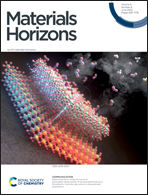Monitoring cardiovascular disease severity using near-infrared mechanoluminescent materials as a built-in indicator†
Abstract
Artificial vascular grafts (AVGs) are widely used to treat cardiovascular diseases (CVDs). But none of the reported AVGs can also monitor the CVD severity. Because CVDs affect the blood pressure, we proposed to employ a force-sensing material that emits near-infrared (NIR) light upon force loading, a NIR mechanoluminescent (ML) material (CaZnOS:Nd3+), as an indicator in AVGs to tackle this challenge. Specifically, we used a polydimethylsiloxane AVG modified with this ML material, termed ML-AVG, to achieve the rapid and convenient monitoring of two CVD models (vascular occlusion and hypertension) in real time. The NIR ML material showed good blood and tissue compatibility without causing an inflammatory response. By implanting the ML-AVGs into the common carotid artery (CCA) of rats, we observed the NIR ML signals emitted from the AVGs by a thermal camera, a NIR spectrometer, and a NIR camera. The NIR ML signal was linearly correlated with the degree of vascular opening (in the vascular occlusion model) or the degree of hypertension (in the hypertension model). Our work suggests that NIR ML materials can monitor the severity of diseases with force or pressure as biomarkers.



 Please wait while we load your content...
Please wait while we load your content...